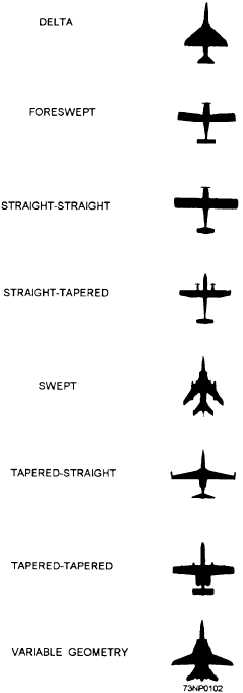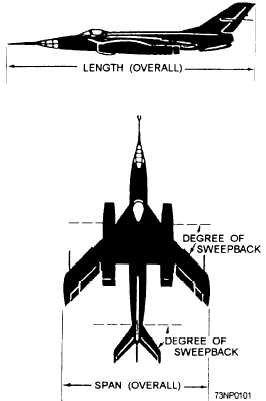wingspan provides the final clue for identification
(fig. 13-3).
IDENTIFICATION AIDS
The study of aircraft shadows can often lead to
identification. Since shadows tend to overemphasize
aircraft features, it is sometimes better to study the
shadow rather than the aircraft itself. Wing shadows,
however, are misleading because of their relation to
the direction of light, upsweep of the wings or
dihedral, and the ground angle of the aircraft. Nose
shadows are helpful; even transparent noses will cast
a shadow where there is rear light. Under the
conditions of rear lighting, the shadow of the nose,
engine, nacelles, and gun turrets are well defined. Fin
and rudder shadows also should be carefully studied
since they provide important recognition features.
Wing Characteristics
Because of their size and shape, the wings of
aircraft are perhaps the easiest aircraft component to
identify. The wings constitute the most important
identification feature on vertical imagery. The
identification features of the wings are their overall
shape (fig. 13-4) and the shape of their tips (fig. 13-5).
Wing shapes are generally classified according to their
taper, amount of sweepback, design of leading edge,
symmetry, or delta configuration, as shown in figure
13-5. Wing sweepback is measured as shown in figure
13-3. Recent technological advances have developed
a unique ultraforward-swept wing (fig. 13-6), which
may lead to a new line of super-fast tactical fighters
with enhanced maneuverability.
Figure 13-3.—Aircraft measurements.
Figure 13-4.—Wing shapes.
13-2





